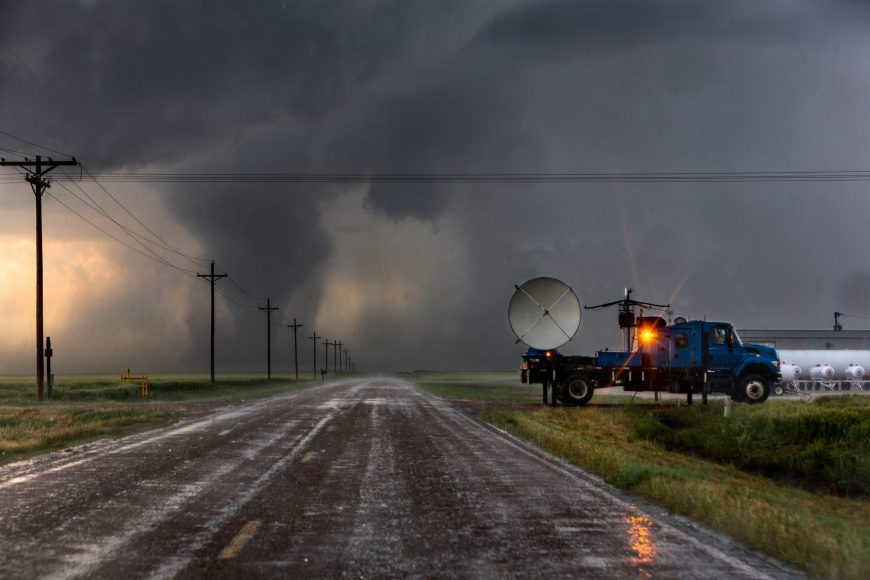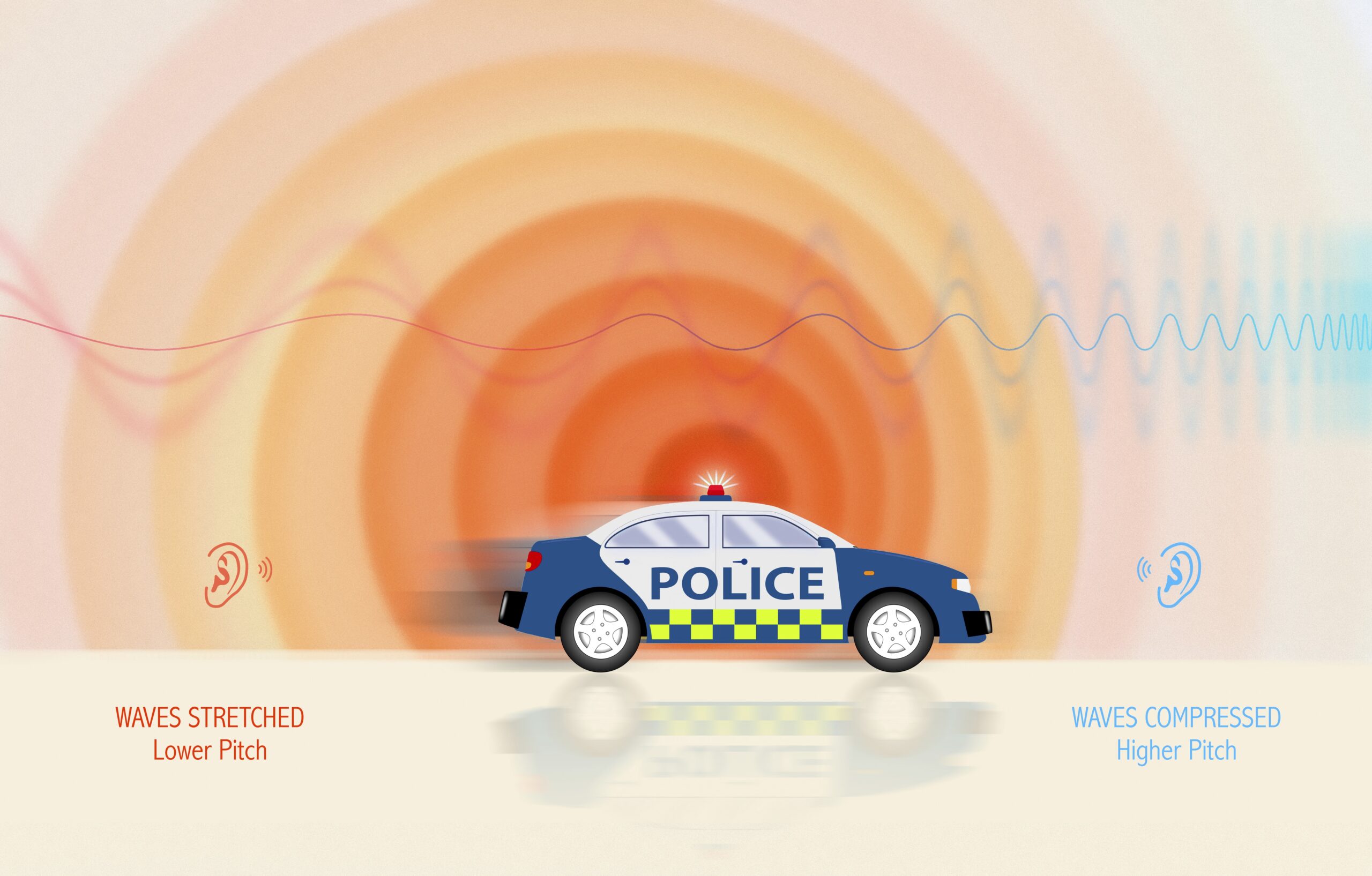Explainer: How the Doppler effect shapes waves in motion
Waves are compressed or stretched when their source — or receiver — is moving

The Doppler effect is used to detect and track severe storms, including tornadoes.
Ryan McGinnis/Moment/Getty Images Plus
Share this:
- Share via email (Opens in new window) Email
- Click to share on Facebook (Opens in new window) Facebook
- Click to share on X (Opens in new window) X
- Click to share on Pinterest (Opens in new window) Pinterest
- Click to share on Reddit (Opens in new window) Reddit
- Share to Google Classroom (Opens in new window) Google Classroom
- Click to print (Opens in new window) Print
By Trisha Muro
Next time you hear a train whistling its approach, or an ambulance driving by with its siren blaring, listen closely. You’ll hear the pitch rise as it gets closer to you, and then fall as it passes. This is due to the Doppler effect, which describes how waves — such as sound waves — change when their source is moving relative to an observer.
All waves can be described by their length. That is, how far it is from the top of one wave to the top of the next. For sound waves, the wavelength relates to pitch. Long sound waves have a low pitch. Shorter wavelengths have higher pitches. (The part of a wave which causes loudness is its amplitude, or how tall the wave is. This feature of a wave is not impacted by the Doppler effect.)
When a source of waves isn’t moving, its waves expand outward in a regular, circular pattern. The wavelengths of those waves are the same in all directions. But when a wave source is moving, its speed affects those wavelengths. Waves in front of the source get smooshed. Waves behind the source get stretched out.
The same effect is seen when an observer moves toward or away from a wave source that is standing still. Moving toward the wave source will make its waves appear smooshed. Moving away from the source will make the waves appear stretched out. This change in apparent wavelength due to the source or observer moving is the Doppler effect.
To picture how this works, imagine that a train is clanging its bell while it waits at a station. Meanwhile, you are standing on the platform. In this case, the bell’s pitch doesn’t seem to change. If the train starts moving very slowly, you won’t notice much difference in the bell’s sound. But if you’re standing at a train crossing when the train approaches at full speed, you’ll hear something very different. The bell’s pitch will rise higher and higher until the moment it passes by. Then, suddenly, its pitch will drop.

The same is true if the train is stopped but you are in motion. If an unmoving train is clanging its bell but you’re riding a train about to pass it by, you’ll hear the same rise in pitch as you close in on the bell, followed by the drop in pitch as you pass.
The Doppler effect’s influence on sound waves is a fun thing to notice. It’s also useful. Ultrasound imaging machines harness this effect to see inside blood vessels. The machines send harmless sound waves (much higher in frequency than we can hear) into the body. Those waves reflect off blood and bounce back to the machine. If blood is moving away from the machine, those reflected waves appear stretched out. If blood is moving toward the machine, they appear scrunched up. This helps doctors see which direction blood is moving, or where it might be stopped due to a blockage.
Red shift, blue shift
Light waves are different from sound waves, yet the Doppler effect impacts them, too. Light from a source coming toward you will appear to have shorter wavelengths. This shifts the source’s hue toward the bluer end of the light spectrum. Light waves emitted by a source moving away from you will lengthen. This expands those waves toward the redder end of the spectrum.

Astronomers use the Doppler effect to determine whether a star or galaxy is moving toward or away from us. Based on the shift in the light’s hue from that object, astronomers can even calculate how fast it is moving relative to Earth. And, when one side of an object is moving toward us and the other side is moving away, astronomers can conclude that it is actually rotating. (Think about a carousel. If you’re standing still, waiting for your turn to ride, you’ll see the carousel horses on one side appearing to come toward you while horses on the other side seem to be moving away.)
This ability to detect rotation is very useful for weather forecasting, too. Meteorologists use radar to track storms. This involves sending radio waves into the storm. Those radio waves bounce off water vapor in the air and return to the device. Waves reflected by water vapor moving away from the device appear stretched out. Waves reflected by vapor moving toward the device appear squished. These data let scientists map movements inside storms. When they see a storm that is rotating, they can issue warnings for tornadoes.
Similarly, weather satellites can watch hurricanes and use the Doppler effect in radar measurements to calculate wind speeds inside the cyclone. The earlier the warnings of these potentially dangerous storms, the greater the chance that people can safely find cover.







